 Stick & Leaf Insect Care
Sheet. Stick & Leaf Insect Care
Sheet.
 Introduction. Introduction.
Stick insects for kids as well as experienced breeders,
are fun and easy to raise. Stick insects are great
for kids under strict supervision of adults in countries
where the stick insect is not native. In case if
it would get outside, even if it is just one stick
insect because most of them clone them selves, it
most likely will cause great damage to the echo
system because there would be no natural predators
to hunt them. Also if you ever have too many of
stick insects it is important to always freeze any
unwonted eggs for 24 hours before throwing them
out. Young bramble leaves are more toxic then the
older ones, so most stick bugs will try to not eat
them unless they run out of food.
Housing.
A general rule, the terarium's walls on each side
should be no smaller then the full grown Stick/Leaf
bug's length times 2. A daily misting of the cage
using a spray bottle allows stick insects to drink
water droplets off the glass, leaves etc. Try to
avoid spraying nymphs cause it often will make them
drown, also i do not recommend giving them a water
bowl due to high chance of them drowning them selves.
Equipment.
You will need some peat moss, sand or anything
als what won't trap the ova. You can get peat moss
from a nursery or garden store.
Temperatures and Humidity.
It is ideal to try and give each specie the temperature
it requires, if however thats not possible, all
of the stick insects will survive in the temperatures
of (70-80F/21-29°C). The ova (eggs) is fairly
easy to keep and hatch. Depending on the specie,
but in general ova needs 24-25°C and a damp
of 70-80% to successfully hatch. You can achieve
that by making yore own incubator.
Recommended Substrates.
To incubate ovae it's best to use Vermiculite.
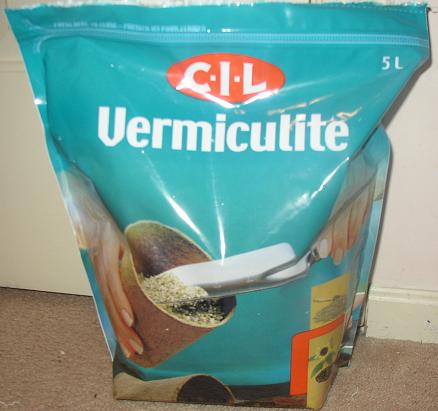
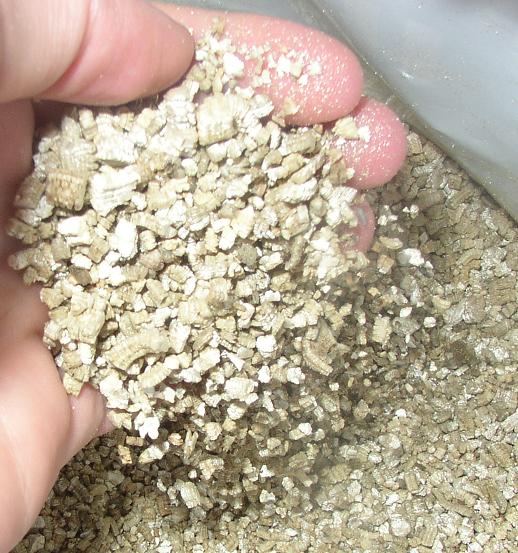
Eco Earth is a great substrate to use as a floor
base in the Stick/Leaf Bug's terarium.
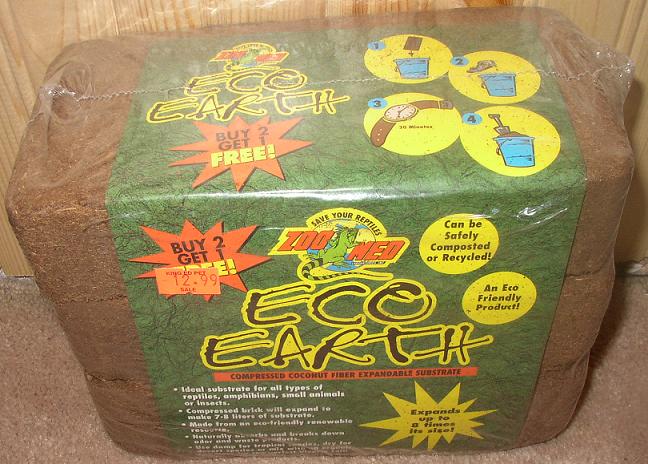
Breeding Your Stick/Leaf Bugs.
Depending on the specie you are trying to breed
you may need both sexes to reproduce, while other
species can clone them selves. After your Stick/Leaf
Bugs have laid ovae, here is how you can make your
own incubator for them (if they need more humidity,
just put less holes in the incubator).
Step 1, Take a see thru plastic
container with an air tight lid.
Step 2, on the bottom of the container
fill it with 1/3rd of the way with vermiculite or
paper towels.
Step 3, suspend a plastic mesh
so that it is at least 4mm away from the substance.
Step 4, drill/poke some wholes
thru to bring in some fresh air, but not too much
or als the water will evaporate too fast.
Step 5, cover with the lid and
poot it in some worm place. This method is especially
a huge time saver for you, if the eggs take 1 month
or longer to hatch.
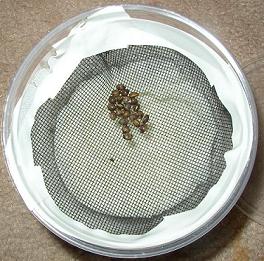 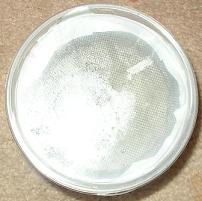
Check on your ova daly especially ones the time
gets closer for them to hatch. New born nymphs will
only live for 24 hours if not given water, they
start eating after 3- 5 days.
For more steadily regulated temperature and humidity,
it’s great to have an incubator. This took
under 30 min to do.... First, take a styrofoam box.
put a 4- 5 gallon tank with water and heater inside.
On the opposite side, place a fan on a timer, to
be turned on up to 8 times per day, to ensure there
are no hot spots with in the box. I also included
a thermometer, so I can check and adjust the temperature
accordingly. They heat of the water, will heat up
to box and the evaporation creates high humidity
levels.
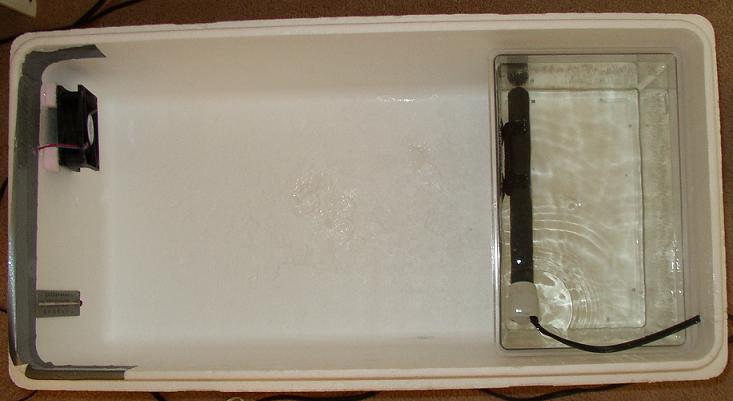
Carefully cut out a piece of styrofoam to thread
the wire out of the cage. One done, it can be re-glued
with Silicon.
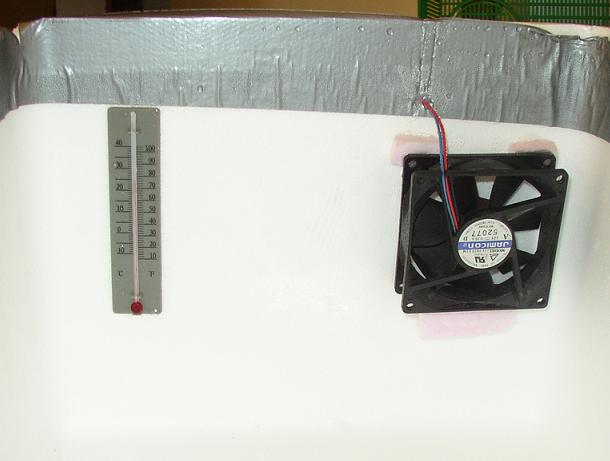
Make sure the Heater is fully submerged in the
water. Most heaters are not meant to be fully submerged,
so ask for submergible one.
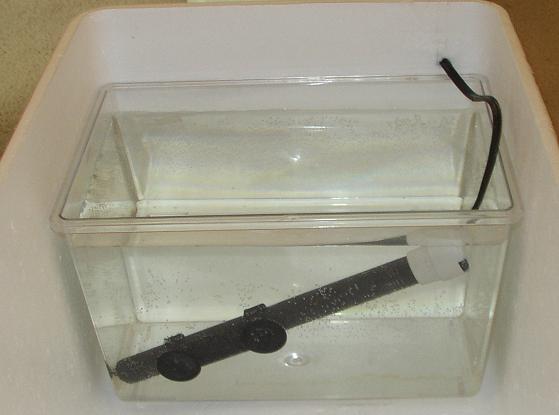
The humidity in individual incubators can be adjusted
by either how moist the paper towel is being kept
with in the fully enclosed cup. Or by adjusting
the size of holes in the cups. I prefer to keep
my cups fully enclosed to minimize any disease out
brakes.
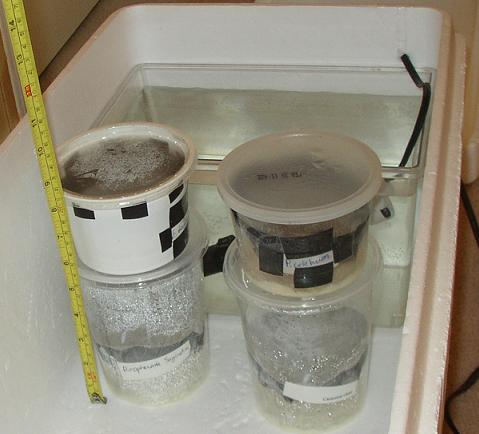
I got this timer from a Home Depot. The cost was
around $25.00 CAD. It can be programmed to be turned
on and off up to 8 times a day for 7 days ahead!
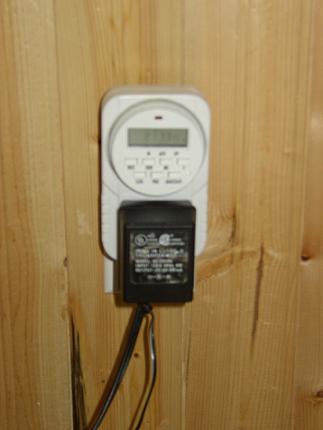
|